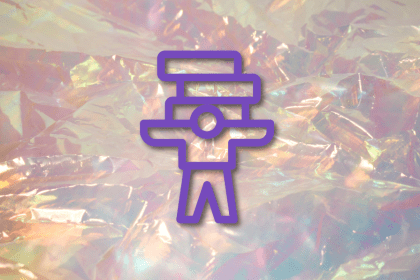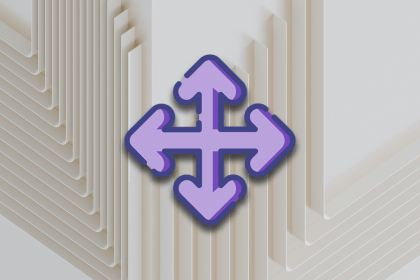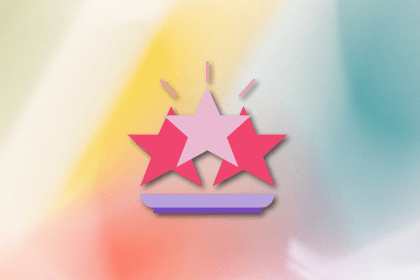Juan Carlos Pontaza is the Senior Director of Engineering UI/UX at Cisco. He joined Cisco in 2010 as a UI Technical Leader and has since held several positions within the company.

Carlos received the Cisco “Pioneer Award” in 2020 for an innovative Cloud ACI product. He currently leads a team of over 70 engineers and focuses on balancing project technical specifications with design, platform, and delivery demands.
We recently connected with Carlos to learn more about Cisco’s initiatives and his current role within the company. Carlos talked about the benefits of combining UI and UX under one umbrella and shared his thoughts on the importance of building a diverse team.
Our conversation has been edited lightly for brevity.
Absolutely! I am originally from Guatemala, and I’ve been at Cisco for nearly 14 years. From the start of my career, I knew I had a passion for UI and UX. I’m very detail-oriented. I like technology, I like things that are simple, and I like things that look good. In fact, I began my career as a UI engineer and was originally hired at Cisco as a UI Technical Leader. Over time, I started moving more into user experience and product design.
I currently handle most UI products related to Cisco’s data center networking solutions. My role is a bit unusual because I handle both UI and UX. At many companies, UI development falls under engineering and UX falls under product marketing.
In my current role, I own the product design and end-to-end UI development for all products within the data center networking solutions. My team is responsible for the full UI development cycle, from UX design through UX research, UI development, and finally, UI automation testing.
I lead about seven different products; some are related to network configuration and others are related to troubleshooting and analytics.
The end-to-end type of UI/UX team that I manage offers many benefits, such as higher development productivity and better employee retention. With this type of organization, you can have core teams for each product, but you can also move engineers from product to product based on workload.
The learning curve is short because of consistent development practices and technologies. Engineers are continually learning from working with newer technologies and different products and, most importantly, they have a clear career growth path.
I can provide an easy analogy. Let’s say you want to build a house on your own. You’ll need to hire a designer, a carpenter, a plumber, and an electrician.
The designer will design the house. The plumber might show up to do their job and tell you that the carpenter has to first finish some work. The carpenter might show up and tell you that their work is complete and suggest you call the electrician. Then the electrician shows up and tells you to call the carpenter back because something was done incorrectly.
This back and forth that you’re trying to manage is similar to the process involved in building a product. But if you hire a general contractor, their job is to coordinate all the building tasks and decisions and just give you the keys when the house is ready.
In this analogy, the UX designer is the architect responsible for designing the house. The UI developers are the builders. The UI automation testing is like the final house inspection. By combining all these functions into one group within the same organization, the product is built much more efficiently.
Cisco has grown to become one of the world’s largest software companies. During my tenure, I’ve participated in several UI and UX initiatives within Cisco during this software transition. Of course, a focus on software goes hand-in-hand with usability. Our ultimate goal is to provide the best experience to our customers, especially on a complex domain like networking.
The focus on improving the usability of products is trending not only at Cisco, but in the industry as well. Today, people have high expectations for the way an application looks. They expect products to be easy to use and good-looking, and they also want them to provide a great value for their business.
Expectations are not that different in the network industry; there’s a focus on increasing simplicity, making things faster, and providing faster value for products.
Cisco is working to standardize not only how its applications look, but also how they behave. The intent is for all products to look and feel like a family in order to improve the usability across products for all customers. This is not easy; it’s a big effort. But any big company would love to have this kind of standardization.
Our goal is that the moment someone logs into any application, it’s like, “Wow, this is Cisco.” You can probably think of some companies that have distinct, well-defined branding. Those companies have spent years getting to that point; we are on that journey and it’s paying off.
There are many groups within Cisco working on this initiative. Working together to come up with a design and getting it implemented across all of Cisco’s products is very exciting.
I think our customers will continue to see the value of this project. It’s not just about look and feel, it’s also about providing a similar experience in terms of how people use or interact with applications or products across all of Cisco’s platforms.
All the products I manage have been going through this transition, and we’re getting great feedback. That’s the beauty of working on UI and user experience; you get immediate recognition of what you do. That’s part of what I love most about my job.
We have strong internal expertise for the network domain because most of the people at Cisco are network people. We have lots of experts in this domain — not just engineers, but also technical marketing people, salespeople, and internal IT people. We are also users of our own products, so that helps a lot.
With our strong base of internal knowledge, we probably know about 80 percent of what needs to be done from a UI/UX perspective. This gives us a good starting point and a big advantage over many other companies.
Initially, we make mockups based on the 80 percent of knowledge that we have in-house. Those mockups are used to do user research with customers and other stakeholders. We go through a series of interviews and surveys to get feedback that influences the other 20 percent of the design.
That 20 percent is vital to the success of the feature. The results of the user research help to validate our understanding of what the customer wants us to build.
At the same time, we have deadlines; we have to deliver fast. Time to market is an important factor in our business. Customers install these products in their data centers, and their business depends on us. We need to time delivery with their scheduled network upgrade and their business needs.
It’s a balancing act between delivering on time and getting as much feedback as possible from customers. The 80 percent of knowledge that we have internally is generally enough to point us in the right direction. From there, we make adjustments based on customer feedback and update the product along the way. If there isn’t time to include some feedback, we plan it for the next release.
Sometimes we have the luxury of more time to invest in UX research, but many projects move super fast, and we have to make decisions and move on. A lot of my time goes into conversations about what we can include in a specific release and what we’ll need to move to the next one. Sometimes we have to go with our gut and move forward. In other cases, we may delay the release to deliver a better user experience.
A hidden aspect of my role is to be the glue between my team and product marketing, technical marketing, product management, customers, backend engineers, and quality assurance. I’m constantly balancing tasks and talking to everyone.
I often joke that my title should be “negotiator” instead of director of engineering. I negotiate with everyone to get agreement on the best things to do in the time we have.
Diversity is one of the most important aspects of my group, for both the UI developers and UX designers. In fact, we’re probably one of the most diverse teams at Cisco because we have purposefully cultivated that identity. Diversity is hard to accomplish if you don’t do it purposefully.
Our team is made up of people from many places with many different skills. With a diverse group, each person brings a perspective and a set of skills that is completely different from someone from another background, culture, or gender. I think diversity plays an even bigger role when creativity and art are involved, so diversity is key in our deliverables.
Every company has a network, and in a company like Cisco, our customers — network administrators — are located throughout the world. Customer expectations can also vary based on location. It’s important for our products to be informed by diverse perspectives.
When we do UX research, we try to talk to people from different countries. We try to understand how they think, hear their expectations, and anticipate which features will need to be extra flexible to satisfy a wider range of customers. Diversity is helpful for understanding other cultures.
Absolutely. We have a tight-knit group culture that influences not just our deliverables, but what we do each day and how people feel. I spend a lot of time cultivating our team culture.
When I have one-on-one meetings, I try not to talk about work; we have many other opportunities for that. Instead, I want to hear about the person’s family, friends, pets, their last trip, or their next vacation. My goal is to build and foster a relationship with my team.
I work hard at building connections with people because once you build these relationships, there’s nothing the team will not do for the commitments we have. Our team is a group of friends, and we trust each other. We work hard, but we also have fun at work.
During the past few years, there’s been a lot of attrition within the industry, with people moving from one job to another. But I can proudly say that I haven’t lost a single person in four or five years. I think one of the main reasons people stay is because of the effort we’ve put into building a diverse team and supportive culture.
I am an engineer, but I find UI/UX fun. I like the creative part of it, and that has been helpful for my career. But what’s really important is to understand what makes you different. I was fortunate to figure this out early in my career.
Actually, one of my managers pointed it out. At the time, I didn’t want to be a manager — I wanted to be a “technical guy.” One of my managers kept pushing me to become a manager. He said, “You’re the person who drives stuff — you make things happen. I have 20 people who code like you, but I don’t have anyone who can drive projects like you. I need you to drive.”
After I finally agreed to give management a try, he explained that while I was as good as the next engineer from a technical perspective, my special skill was the ability to move people toward a common goal. This was a big lesson for me: figure out what makes you different, and you’ll understand where you’re going to thrive. I spend a lot of time with my team talking about this and helping them identify their strengths.
I work in the Bay Area. Pretty much everyone here can write code. Throughout the world, there are millions of good UI developers. Regarding UX, anyone who studies design can be a UX designer. What makes an individual UI developer or UX designer stand out from the rest is really what matters in the long run.
LogRocket's Galileo AI watches sessions and understands user feedback for you, automating the most time-intensive parts of your job and giving you more time to focus on great design.
See how design choices, interactions, and issues affect your users — get a demo of LogRocket today.

The checkbox is one of the most common elements in UX design. Learn all about the feature, its states, and the types of selection.

Optimization fatigue is real. Here’s why designing only for metrics drains creativity, and how to bring the human back into UX.

Let’s explore why and when to use drag and drop, discussing real-world examples, platform-specific considerations, and accessibility tips.

We’re told to reduce friction, but sometimes friction builds value. This blog explores how scarcity, when designed well, sharpens focus and strengthens user trust.